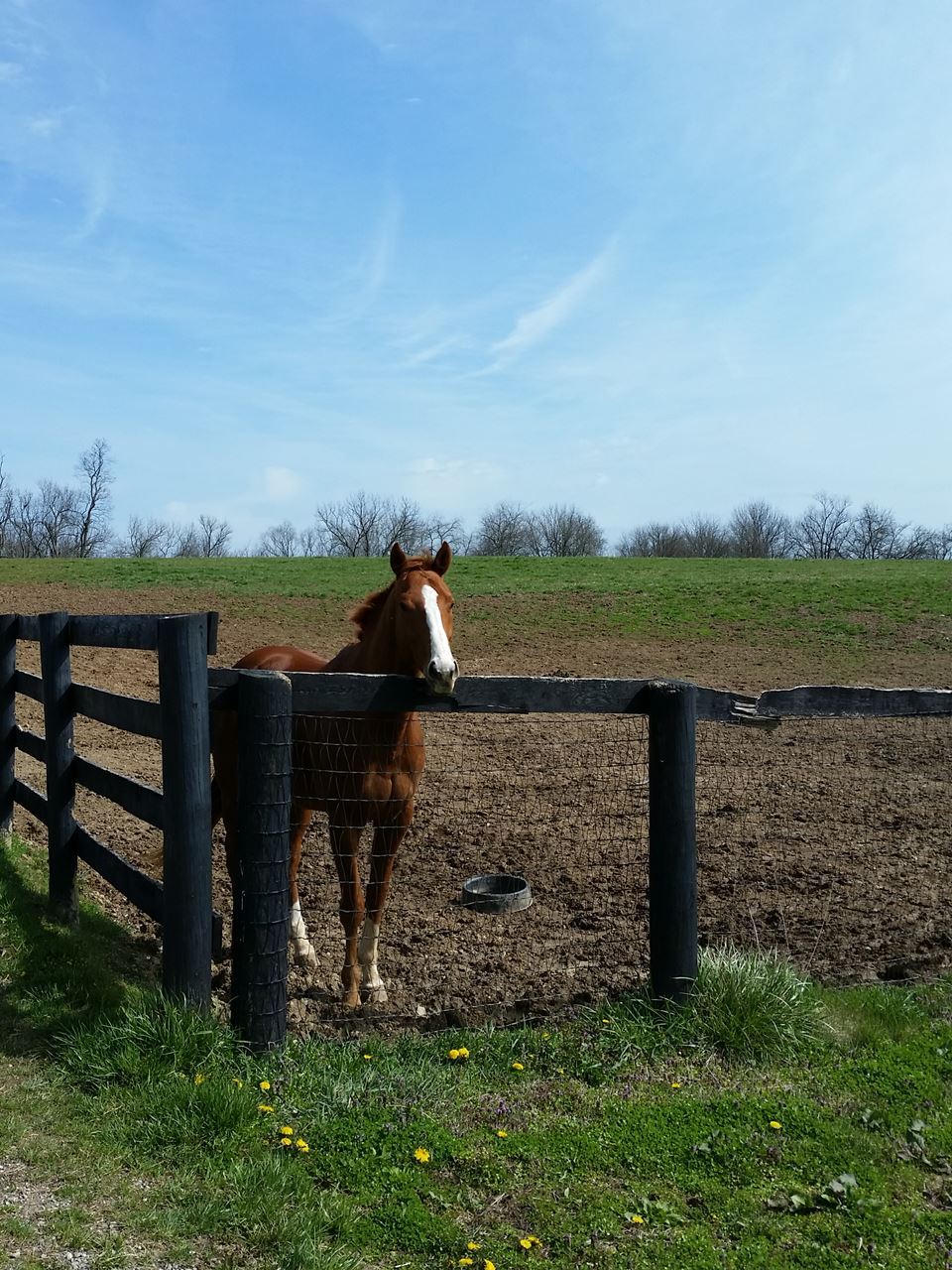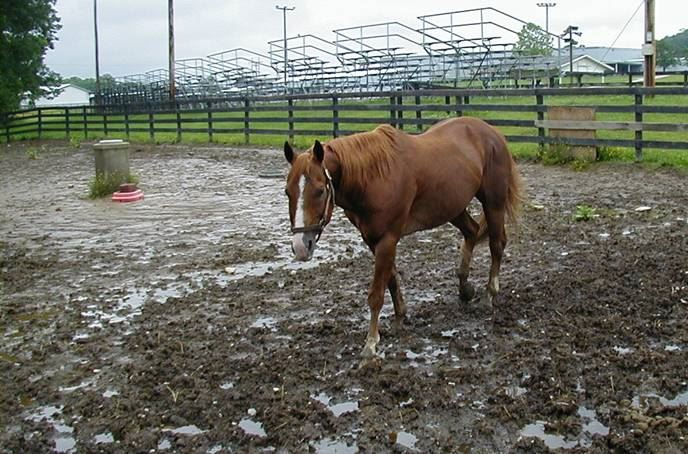By Sarah E Coleman
 Ah, spring. While most of us are relishing seeing our horse’s fuzzy winter coats go by the wayside, we’re not as welcoming to one of the side effects of spring rains: mud!
Ah, spring. While most of us are relishing seeing our horse’s fuzzy winter coats go by the wayside, we’re not as welcoming to one of the side effects of spring rains: mud!
While some mud is inevitable on almost every farm, it is possible to limit its occurrence with some strategic planning.
Health & Safety Hazards
There’s nothing quite like losing shoes (yours and your horse’s) to make resentment of spring rains bubble over. Is your trailer parked in the back 40? Be prepared, it may be buried when it sunk into rain softened grounds.
In addition to being hazardous to safety, mud can create a health hazard for your horse if he has to stand it in with no ability to move to higher ground. Not only is it hard on his hooves and legs, potentially causing everything from thrush to scratches, pooling water is a breeding ground for mosquitoes and flies, which can carry an assortment of diseases.
Defensive Tactics
Combating mud on your farm can seem an exercise in futility, but here are some long-term strategies to help eliminate the sticky stuff.
- Create a sacrifice lot that will keep all of your pastures and paddocks from turning into muddy quagmires, if you have enough space. In a perfect world, this area would be on higher ground, away from streams and ponds.
- Install rain gutters and downspouts on barns and outbuildings. These help direct water away from paddocks and foundations.
- Fence horses out of streams, ponds and low-lying areas on your farm. Hooves trample embankments and shorelines, creating an ever-expanding muddy shoreline.
- Place bridges over low-lying areas in walkways between paddocks so you’re not constantly walking through a muddy bog to retrieve horses.
- During the warmer season, don’t allow horses to graze growing grass too short. Grass without a good root system in place loses its ability to prevent runoff and is easily trampled into mud.
- Remove manure around heavily trafficked areas like waterers, hay feeders and gates at least once a week.
- Consider installing French drains, which intercept water flowing through paddocks and pastures using trenches filled with gravel, then flows toward a specific outlet.
- Place sand, gravel or wood chips around gates, waterers and feeders and even in run-in sheds. These materials are always more effective when used on top of landscape fabric to prevent them from sinking into the soil. A good rule of thumb is to put down twice as much footing as you have mud, generally at least 6 inches deep.
- Investigate soil stabilizing grid systems that allow grass to grow through the grid, protecting roots and preventing mud. Many farms use these around gates, waterers and hay feeders.
- Move hay feeders periodically so horses are not chronically forced to stand in mud to eat. This will allow the muddy areas to dry out while horses spend their time elsewhere.
- Plant trees and shrubs. Thought not immediately beneficial, plants use a lot of water and can reduce the standing water on your farm. Planted around paddocks (make sure they are equine-safe), shrubs can keep them drier and reduce runoff.
